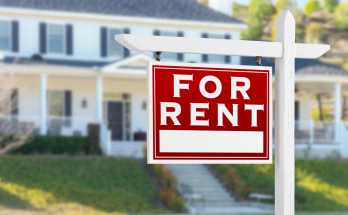There’s much more to commercial real estate endeavors than making money. But ultimately, if you’re not making a return on your investment, it quickly loses its thrill. Few property owners utilize cost segregation techniques. With my background in both residential and commercial real estate, I find this shocking, frankly. Today, I’ll be explaining cost segregation, how it can help you as a property owner, and whether it’s right for you. Get ready to save some money!
What is Cost Segregation?
If you’re unfamiliar with cost segregation, you’re not alone. I’ve met seasoned veterans of property acquisition that overlook this money-saving technicality. To be fair, it won’t work for every situation. But if you’ve owned your property for less than two years, you’ll want to take note. And even if you haven’t, this technique is still worth keeping up your sleeve for future properties.
So what exactly is cost segregation? It’s a deferral strategy scrutinizing the depreciation of certain real estate items in order to improve tax deductions. Clear as mud? Don’t worry, I’ll break it down further in just a moment. Today, we’re specifically discussing commercial and multifamily properties since that’s my specialty. However, this strategy can work for a myriad of real estate types including those built, purchased, remodeled, or expanded. It’s important to be aware of cost segregation options. Why? Because it can save you an enormous amount of money.
Understanding Depreciation Deductions
If you’re a property owner, you’re likely already aware of depreciation deductions. But since they’re crucial to cost segregation, it’s important to have a solid understanding of how they work. Assets that can depreciate include the walls of a structure, windows, roofing, and HVAC units just to name a few. Each of these items has an average lifespan. Using a hypothetical example, let’s say a roof has an estimated lifespan of 10 years and costs you $100,000 brand new. The depreciation can only run for the 10 years of that roof’s lifespan. This means you can only depreciate that $100,000 amount over the course of 10 years. How do you find the lifespan of an asset? The firms conducting cost segregation studies will actually estimate this for you. We’ll go into this a bit more next.
Setting Up an Independent Cost Segregation Study
If you feel like you could benefit from this strategy, you’ll ultimately need to set up a cost segregation study. An independent firm of your choosing will conduct this study. These firms need to be licensed and approved by the IRS since their findings will be officially reported. You can expect the investigating firm to generate a comprehensive report, sometimes running upwards of 100 pages. The inspectors will scrutinize all of your depreciable assets, adding their expert opinions to their report.
Hiring the right independent firm is arguably the most important step of cost segregation. Unfortunately, it’s also where the biggest risk lies for property owners. Hiring an independent firm with too aggressive an approach could do more harm than good by triggering an IRS audit. That’s why I always suggest doing your homework before committing to an inspection firm. I’d recommend reading reviews, investigating track records, and talking with other property owners. You may find an investor or landlord who’s been through the process. Chances are good that they have a trusted inspection firm they can recommend. If you’re having trouble finding a reliable firm, feel free to reach out to me and I can help you with some options I trust.
How Do You Know if Cost Segregation is Right for You?
So how do you know if cost segregation is the right approach for you? Obviously, every situation is going to be different. But I’ve found a few general rules of thumb that can help you reach a conclusion that works for you. First, it’s important to keep in mind that this method is designed for the long-term, not the short. If you’re looking for a quick money-generating solution, a cost segregation study won’t deliver it.
Secondly, if you’re trying to avoid the scrutiny of the IRS for any reason, cost segregation is not for you. It directly involves the IRS in an official capacity. Once your independent inspection firm completes their report, they’ll send it to the IRS. And you better believe the IRS is going to pay attention to it.
Finally, it’s important to remember that cost segregation is intended to save you money on taxes. When you trade or sell your property, you’re required to pay a depreciation tax. However, if you file a 1031 exchange, you can swap out one property for another and defer the capital gains tax. So, in that case, cost segregation wouldn’t actually help you. Make sure you really understand your strategy before pulling the trigger on an inspection!
When is the Best Time to Request a Report
When it comes to timing your cost segregation efforts, there’s no one-size-fits-all answer. There are just too many factors to consider. However, generally speaking, most cost segregation strategies are employed shortly after the purchase of a property. Many property owners aware of this technique choose to order a report after finalizing their improvements to a recently purchased property. At that point, they’ve invested so much liquidity into these depreciable assets that they get the most from their study.
Cost segregation is not a requirement of the IRS unless you opt to depreciate your property or its relevant assets. Therefore, this is purely an elective process. However, it’s one that I’ve rarely seen employed in commercial real estate despite its obvious benefits. I assume this is simply a lack of awareness. The $10,000 price tag on the average cost segregation report could be daunting as well. But if you’re playing the long game, this technique could still be more lucrative to you in the end.







